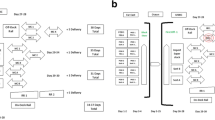Abstract
During the past 20 years world seaborne trade increased by almost 40%. Liner shipping grew the fastest. Containerised cargo was clearly the most dynamic sector of global seaborne trade. Containerisation has thus been a major and increasingly important element of not only maritime activity, but also of world trade and of entire global industrial structure. The growing significance of containerisation is a reflection of the changes that have occurred in the international organisation of manufacturing and production. Container lines have moved through several organisational phases in the search for profitability. Most of the advances in containership design have been associated with the upsizing of vessels, both to accommodate trade growth and to offer economies of scale in a highly competitive market. Information technology is now seen as the great battleground of the next decade among not just carriers, but also forwarders, logistics based integrators and, potentially, pure technology companies who may use their systems expertise to enter the industry at the expense of traditional players. Container handling in ports is another area where technical advance is noticeable. Increasingly larger tonnage, especially of vessels deployed in the container market, will have significant implications for ports. Massive investments and substantial productivity improvements are generally required to enable ports to meet the stringent service requirements of their customers efficiently. The speed of container handling and consequent vessel turnaround time is a crucial issue in terms of competition. The worldwide trend towards greater private sector involvement in ports has become apparent. While wholesale privatisation has occurred in a few cases, what is more common is the introduction of private finance, operation and management in place of state funds and administration. The advent of the so-called ‘global stevedore’ in the 1980s has had a fundamental effect on port facility financing and management. The international stevedoring industry is made-up of participants with a commercial remit. The bottom line with port facility acquisitions or new terminal developments is that developers of all categories look for annual pre-tax returns in excess of 20% of turnover. While the acquisition and development of port facilities is a global business, it is one that is highly influenced by key individuals within the international stevedores. Competition among international stevedores and between these parties and ocean carriers for port concessions has never been stronger.
Similar content being viewed by others
Author information
Authors and Affiliations
Rights and permissions
About this article
Cite this article
Peters, H. Developments in Global Seatrade and Container Shipping Markets: Their Effects on the Port Industry and Private Sector Involvement. Marit Econ Logist 3, 3–26 (2001). https://doi.org/10.1057/palgrave.ijme.9100003
Published:
Issue Date:
DOI: https://doi.org/10.1057/palgrave.ijme.9100003




